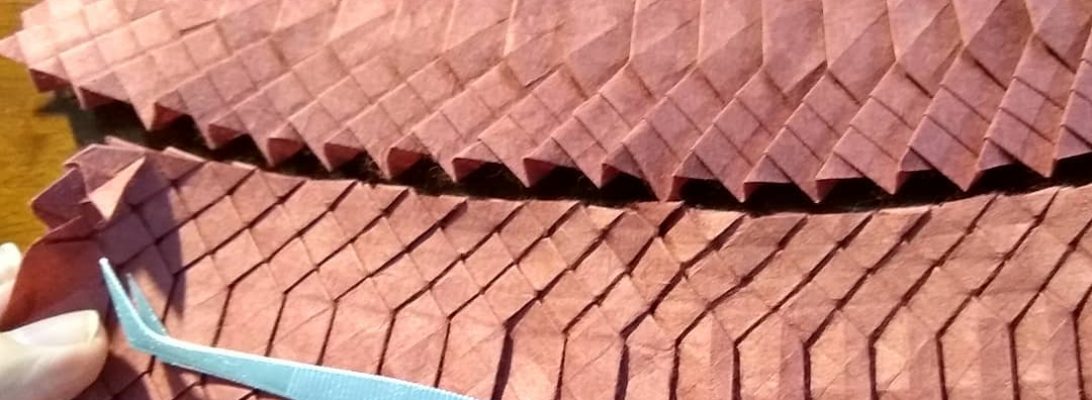Cleaning my desk is an important psychological activity, it helps me “move on” and, oddly, I had not cleaned my home desk since well before I retired … I am not sure why, but I just was not ready:

The cleaning process also de-clutters, re-homes and generates a pile of detritus headed for the rubbish bin. Among the accumulated layers of life I discovered a printed diagram from Pham Hoang Tuan for a lovely ornate goldfish.
I remember being sent a bunch of printed diagrams with a paper pack from him (I won it for … something I cannot remember), and realise I have yet to fold most of that hand-made and hand-coloured paper … must do something about it.
I approached this model like most – I first grabbed my goto test-fold paper (Kraft), decided to try a 30cm square and set of, reasoning that I will either finish it or fail trying – both are useful journeys.

Like many diagrams from Pham Hoang Tuan, I found some inconsistencies between what was being asked and what you had to do that with, but as a reasonably experienced folder I was able to “creatively” step over those weirdnesses.
This model is lovely, and screams for pretty, textured, thin paper – so I must re-visit it with the same. Like Ronald Koh’s Goldfish, this model is volumetric (it is chubby), has a profusion of fins and the shaping requires a deft, delicate touch. I love the formation of the eyes and separation of the fins, a symphony of bizarre genetic engineering designed to create fan-tailed delicate ornamental goldfish.
It contains a number of seemingly impossible closed-sinks to shape the body and create volume, but the net result is quite beautiful – one I will return to.








